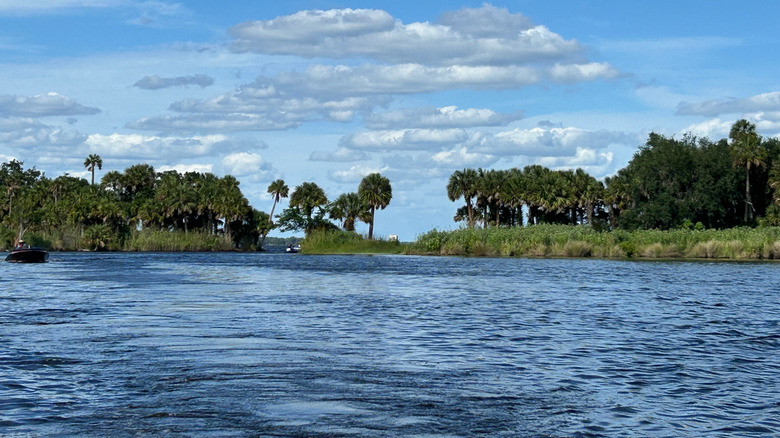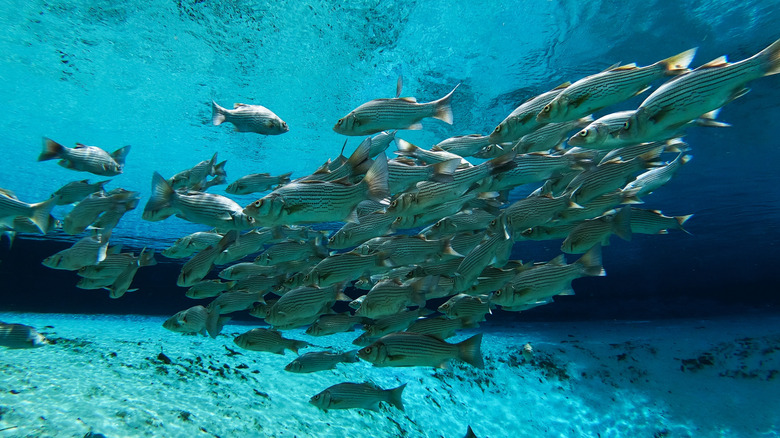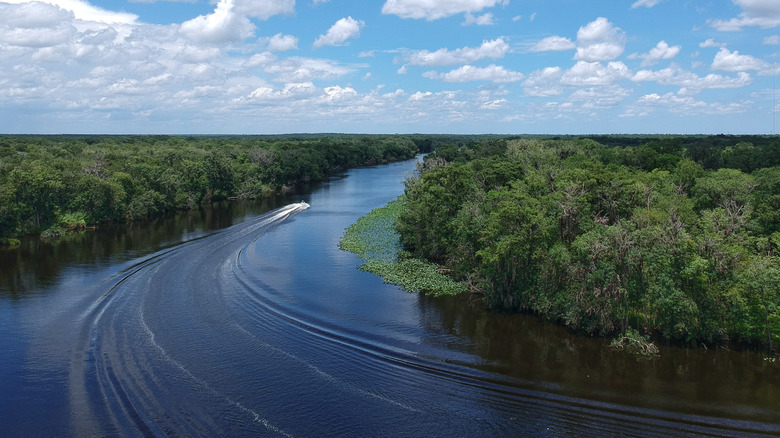Situated Between Orlando And Jacksonville Is Florida's Second-Largest Lake With Wildlife And Relaxation
Florida is the Sunshine State, but, with apologies to Minnesota, it's also a state of lakes. Florida has over 7,800 lakes, and more than 35 percent of those are located in the region near and north of Orlando in Lake, Orange, Osceola, and Polk counties. The area is a playground for those who love the water. Crystal-clear springs bubble up everywhere, and winding rivers and lakes provide miles of shoreline for boating, fishing, wakeboarding, and other recreational activities.
Lake George is the state's second-largest lake after Lake Okeechobee. It's an hour-and-a-half drive north of Orlando, comfortably removed from major cities and the madness of the I-4. The lake is part of the St. Johns River, the longest in Florida (over 310 miles). It flows north from near Vero Beach, runs near Orlando, through downtown Jacksonville, and meets the sea at Mayport, a little-known, Old Florida seafood town. Along its route, it widens into several large lakes, including Lake George.
Probably the most unique thing about Lake George is the fact that it's surrounded by conservation lands. In a state known for its cities and resorts, it's a pleasant change and a great spot to see what Old Florida was all about. Lake George Conservation Area, Lake George State Forest, and Ocala National Forest surround the lake. Only a few small communities, including Yellow Bluff and Georgetown, have developed areas overlooking the lake. Many of the protected zones are open for fishing, hunting, horseback riding, hiking, and camping — just a few reasons why Lake George and the St. Johns River are known as some of the most recreational bodies of water in the state.
Lake George is home to Florida wildlife — and not just alligators
Lake George is a natural habitat for the state's wildlife. While it may be one of the most alligator-filled destinations in Florida, visitors should not be concerned. Alligators are far more interested in small mammals than humans, but perhaps it's best to leave Fluffy and Spot at home. You'll see alligators everywhere on Lake Geroge, sunning on the marshy shoreline and near the docks and boat ramps.
The 46,000-acre lake is a popular fishing hole for boaters from the area. Lake George is surrounded by marshes, and it has a consistent depth of about 8 to 12 feet — pretty shallow, even by Florida standards. The most prevalent species there are striped and largemouth bass, bluegills, sunfish, and crappies. The lake is uniquely salty due to runoff and minerals from the nearby springs. Saltwater species can sometimes be spotted in the lake, like stingrays and blue crabs.
Birders will find plenty of species to point their binoculars at, and there are Great Florida Birding and Wildlife Trail sites nearby in Salt Springs, Welaka, and Lake George State Forest. Species of note are sandhill cranes, wood storks, and hawks. The area also hosts one of the largest populations of bald eagles in the region. In the lands surrounding the lake, you can catch glimpses of some of Florida's most elusive and secretive residents. Black bears, bobcats, otters, and white-tailed deer live around here.
Relaxing on Lake George
The best way to experience Lake George is by boat. In Astor, Castaways On the River has rental pontoons available to take exploring. There are also guided boat trips and tours that leave out of the area. If you're bringing your own vessel, there is a public boat ramp off Lake George Road, right off Highway 40, on the south end of the lake.
One of the best spots to get a sample for Lake George doesn't require a boat. Silver Glen Springs Recreation Area is managed by the U.S. Forest Service and is a popular swimming and hiking destination on the lake. The crystal-clear, 72-degree spring water makes the spot one of the best snorkeling destinations in the U.S., and chances are you'll spot one of the many manatees that like to hang out here. It's a first-magnitude spring, meaning it's one of the biggest in the state. Kayak and canoe rentals are available, and you can also hike the 3-mile-long Lake George Trail.
Many small communities on the lake, such as Astor, Georgetown, and Salt Springs, have cabins, campgrounds, or vacation home rentals. Lake George is a popular destination year-round, but the best weather occurs outside the muggy summers — April, May, October, and November are the best times to visit.


